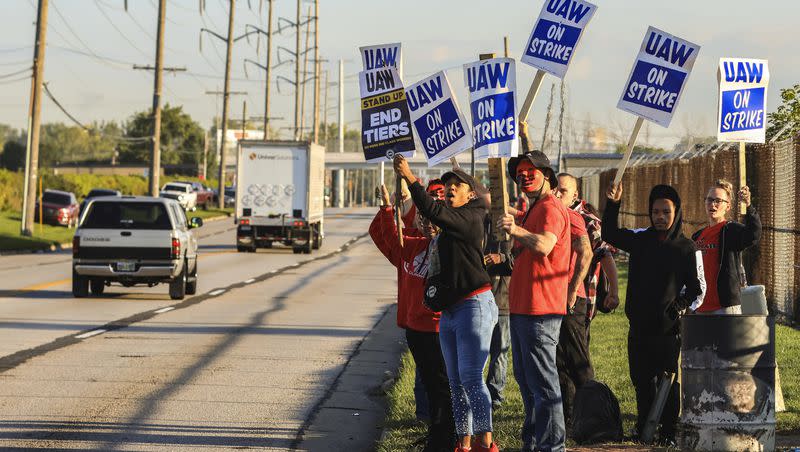Auto workers union declares unprecedented strike against 3 biggest automakers in U.S.

The United Auto Workers union declared an unprecedented strike against the three biggest automakers in the U.S. Friday.
What we know: The union started a strike against General Motors, Ford and Chrysler parent company Stellantis, marking “the most ambitious U.S. industrial labor action in decades,” Reuters reported. It’s the first time the union has gone on strike against all three at the same time.
“For the first time in our history we will strike all three of the Big Three,” UAW President Shawn Fain told Reuters.
The strike implemented is called a “Stand Up Strike,” which is a call for workers to walk off the job, and the union says it might request other Detroit locals to “stand up” and do the same, joining the strike, according to CNN.
A total of 13,000 of the United Auto Worker’s 145,000 members left the job Friday, per CNN.
“These were chosen carefully by the UAW and reflect a strategy that will ensure a large number of suppliers and dealers are affected, while reducing the number of UAW workers that, at least initially, are on strike and receiving strike pay,” Patrick Anderson, CEO of Anderson Economic Group, told CNN.
What do the workers want?
Here are some of the demands, according to The Associated Press:
36% raises in pay over four years.
An end to varying tiers of wages depending on factory jobs.
32-hour work weeks that involve 40 hours of pay.
Restoring “traditional defined-benefit pensions for new hires who now only receive 401(k)-style retirement plans.”
Cost-of-living pay raises reinstated.
The union allowed to represent workers at electric vehicle battery factories — most are joint ventures between automakers and South Korean companies.
What have automakers offered in response to the strike?
Negotiations have been ongoing, and automakers have offered some concessions, but the union agreed to strike and ask for more.
Here’s what the companies have offered, per AP:
GM announced it offered a 20% wage increase Thursday.
Ford offered a 20% boost in pay.
Stellantis says it will increase wages 17.5%, but has since made another offer that hasn’t been made public.
Automakers argue that the union’s demands are “too expensive.”
What could auto workers’ strike mean for the economy?
The economic impact could affect more than just the automakers and members of the union.
“A six-week strike would cost the U.S. two-tenths of a percentage point of economic growth over a period of three months ending in December,” chief economist for Moody’s Analytics Mark Zandi told ABC News.
Even a shorter 10-day strike could “cost the U.S. economy $5.6 billion in losses,” according to a report from the Anderson Economic Group.

